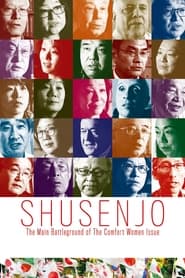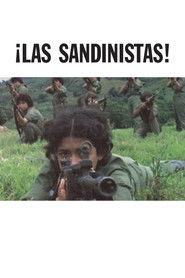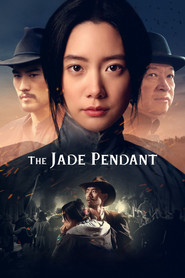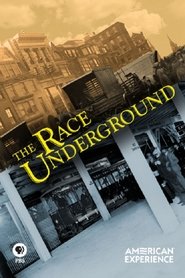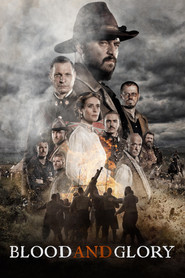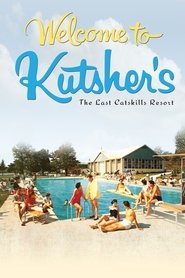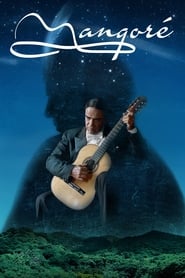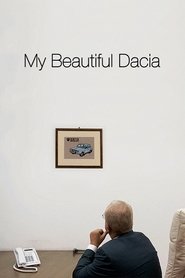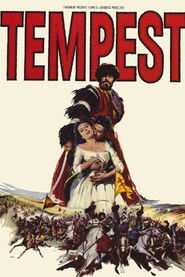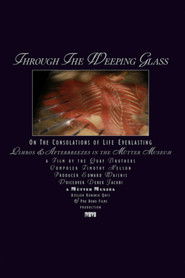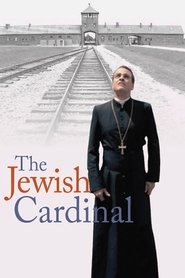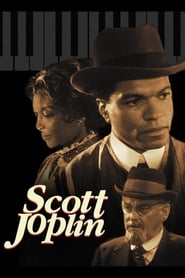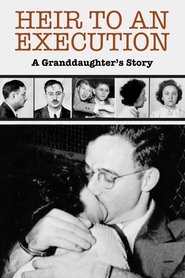Top Rated History Movies on Apple iTunes - Page 68
-
Shusenjo: The Main Battleground of the Comfort Women Issue
2019
star 7.4A Japanese-American director digs deep into the controversial 'comfort women' issue to settle the debate on whether the women were paid prostitutes or sex slaves, and reveals the motivations and intentions of the main actors pushing to revise history in Japan. -
¡Las Sandinistas!
2018
¡Las Sandinistas!
2018
star 7¡Las Sandinistas! uncovers the disappearing stories of women who shattered barriers to lead combat and social reform during Nicaragua’s 1979 Sandinista Revolution, and who continue to lead Nicaragua’s current struggle for democracy and equality. -
The Jade Pendant
2017
The Jade Pendant
2017
star 6Fleeing an arranged marriage in China, the independent Peony signs a contract to work as a “flower girl” in America, where she meets Tom, an American Born Chinese cook whose father works on the Transcontinental Railroad. Thwarted by a Hong Kong Triad boss seeking to extend his power into America, theirs is the tale of the first great Chinese immigration to the United States – a story of romance, bigotry, passion, food and a search for everlasting love – set against the largest mass lynching in American history, in Los Angeles’ Chinatown, in 1871. -
The Race Underground
2017
The Race Underground
2017
star 7.7Based on Doug Most's acclaimed non-fiction book of the same name, The Race Underground tells the dramatic story of how Boston overcame a litany of challenges, the greed-driven interests of businessmen, and the great fears of its citizenry to create America’s first subway. -
Blood and Glory
2016
Blood and Glory
2016
star 6.3Set in 1901, this period epic follows Willem Morkel, a Boer family man whose wife and son are murdered during the Anglo-Boer War. Captured as a prisoner of war, Willem must survive incarceration in the notorious St. Helena concentration camp and defeat the ruthless Colonel Swannell, at his own game—Rugby -
Paradise Club
2017
Paradise Club
2017
star 2.9During the height of the social revolution, a young dancer searches for salvation when she chooses to leave paradise. -
The Amazing Nina Simone
2015
star 7.4The life, legacy and musical accomplishments of singer, musician, pianist, songwriter and Civil Rights activist, Nina Simone through interviews with over 50 of the subject’s friends, family, band members, lovers and fellow activists. The film has been called the best of the three Nina Simone films by The New Yorker Magazine. -
Welcome to Kutsher's: The Last Catskills Resort
2012
star 5.3Kutsher's Country Club is the last surviving Jewish resort in the Catskills. One of the legendary Borscht Belt hotels during its heyday, Kutsher's has been family-owned and operated for over 100 years. Exploring the full Dirty Dancing-era Catskills experience-- and how it changed American pop culture in the comedy, sports and vacation industries-- this documentary captures a last glimpse of a lost world as it disappears before our eyes. -
Mangoré
2015
Mangoré
2015
star 7.7The life and times of famed Paraguayan musician Agustín Pío Barrios, from the years of his youth to his international success. -
My Beautiful Dacia
2009
My Beautiful Dacia
2009
star 7An extravagant odyssey from Communism to Capitalism as seen from the perspective of one of Romania's most charismatic symbols, the Dacia automobile. -
13 Days in France
1968
13 Days in France
1968
star 6This colorful documentary chronicles the events of the 1968 Winter Olympics in France. The events made international celebrities of skater Peggy Fleming and skier Jean-Claude Killy for their gold-medal performances. The camera accurately catches the speed of bobsleds and downhill racers and ski jumpers as they race for the gold. President Charles DeGaulle is shown observing the action over 13 days, which saw France earn the best performance to date in the winter games. -
Tempest
1958
Tempest
1958
star 6A young officer in the army of Empress Catherine of Russia is on his way to his new duty station at a remote outpost. During a blinding snowstorm he comes upon a stranger who was caught in the storm and is near death from freezing. He rescues the man and eventually brings him back to health. When the man is well enough to travel, the two part company and the man vows to repay the officer for saving his life. Soon after he arrives at his new post, a revolt by the local Cossacks breaks out and the fort is besieged by the rebels. The young officer is astonished to find out that the leader of the rebellious Cossacks is none other than the stranger whose life he had saved during the storm. -
Through the Weeping Glass: On the Consolations of Life Everlasting (Limbos & Afterbreezes in the Mütter Museum)
2011
star 6.3A documentary on the subject of the collections of books, instruments and medical anomalies at The College of Physicians of Philadelphia and the Mutter Museum housed there. This short film represents the first to be made by the internationally recognized Quay Brothers in the United States. While not a stop-motion animation film, a form for which the Quays are best known, the entire film is vibrantly constructed and 'animated'. Musical score by composer Tim Nelson and voice-over provided by Derek Jacobi. -
The Jewish Cardinal
2013
The Jewish Cardinal
2013
star 7.1The Jewish Cardinal tells the amazing true story of Jean-Marie Lustiger, the son of Polish-Jewish immigrants, who maintained his cultural identity as a Jew even after converting to Catholicism at a young age, and later joining the priesthood. Quickly rising within the ranks of the Church, Lustiger was appointed Archbishop of Paris by Pope John Paul II―and found a new platform to celebrate his dual identity as a Catholic Jew, earning him both friends and enemies from either group. When Carmelite nuns settle down to build a convent within the cursed walls of Auschwitz, Lustiger finds himself a mediator between the two communities―and he may be forced, at last, to choose his side. -
Saving Lincoln
2013
Saving Lincoln
2013
star 4.7The almost entirely true story of Abraham Lincoln and his self-appointed bodyguard, U.S. Marshal Ward Hill Lamon - a banjo-playing Southerner who foiled repeated attempts on the President's life, and kept him functioning during the darkest hours of the Civil War. -
Dream Team 1935
2012
Dream Team 1935
2012
star 6.7Geneva, Switzerland 1935. The first European Basketball Championship is about to take place. Basketball is still an unknown sport in Europe, and the national teams are meeting for the first time. Each wants the honour of being the first champion. Meanwhile in Latvia, coach Baumanis is convinced that he can assemble a team and take it to Geneva. He quickly learns however, that triumph and defeat are also part of the game. Coach Baumanis faces many difficulties, as well as unexpected help from those closest to him. -
Scott Joplin
1977
Scott Joplin
1977
star 6.1The life story of Scott Joplin and how he became the greatest ragtime composer of all time. -
The Tents
2012
The Tents
2012
star 6Each year, tents in Bryant Park herald New York Fashion Week, whose back story is as fascinating as the couture on the catwalk. Fashion's biggest names share the sometimes shocking, often funny rags-to-riches evolution of the iconic event. -
Heir To An Execution
2004
Heir To An Execution
2004
star 6.9When Julius and Ethel Rosenberg were put to death in 1953 for selling atomic secrets to the USSR, their two children were orphaned after every family member refused to take them in. Documentarian Ivy Meeropol, raised to believe in her grandparents' innocence, begins investigating what actually happened, interviewing family members and friends. With declassified papers indicating Julius was participating in espionage in some capacity, Ivy tries to understand the beliefs that drove the couple. -
Good Night, and Good Luck
2025
star 7.3Livestreamed from the penultimate show at the Winter Garden Theatre in New York City, this stage adaptation of George Clooney's 2005 film follows the story of journalist Edward R. Murrow's stand against Senator Joseph McCarthy's anti-communist witch-hunts in the early 1950s.
 Netflix
Netflix
 Amazon Prime Video
Amazon Prime Video
 Apple iTunes
Apple iTunes
 Apple TV Plus
Apple TV Plus
 Disney Plus
Disney Plus
 Google Play Movies
Google Play Movies
 Paramount Plus
Paramount Plus
 Hulu
Hulu
 HBO Max
HBO Max
 YouTube
YouTube
 fuboTV
fuboTV
 Peacock
Peacock
 Peacock Premium
Peacock Premium
 Amazon Video
Amazon Video
 The Roku Channel
The Roku Channel
 AMC+
AMC+
 Kocowa
Kocowa
 Hoopla
Hoopla
 The CW
The CW
 Vudu
Vudu
 Starz
Starz
 Showtime
Showtime
 PBS
PBS
 Pantaflix
Pantaflix
 FXNow
FXNow
 Tubi TV
Tubi TV
 Kanopy
Kanopy
 Comedy Central
Comedy Central
 Crunchyroll
Crunchyroll
 Microsoft Store
Microsoft Store
 Redbox
Redbox
 Sun Nxt
Sun Nxt
 ABC
ABC
 DIRECTV
DIRECTV
 Crackle
Crackle
 Fandor
Fandor
 Plex
Plex
